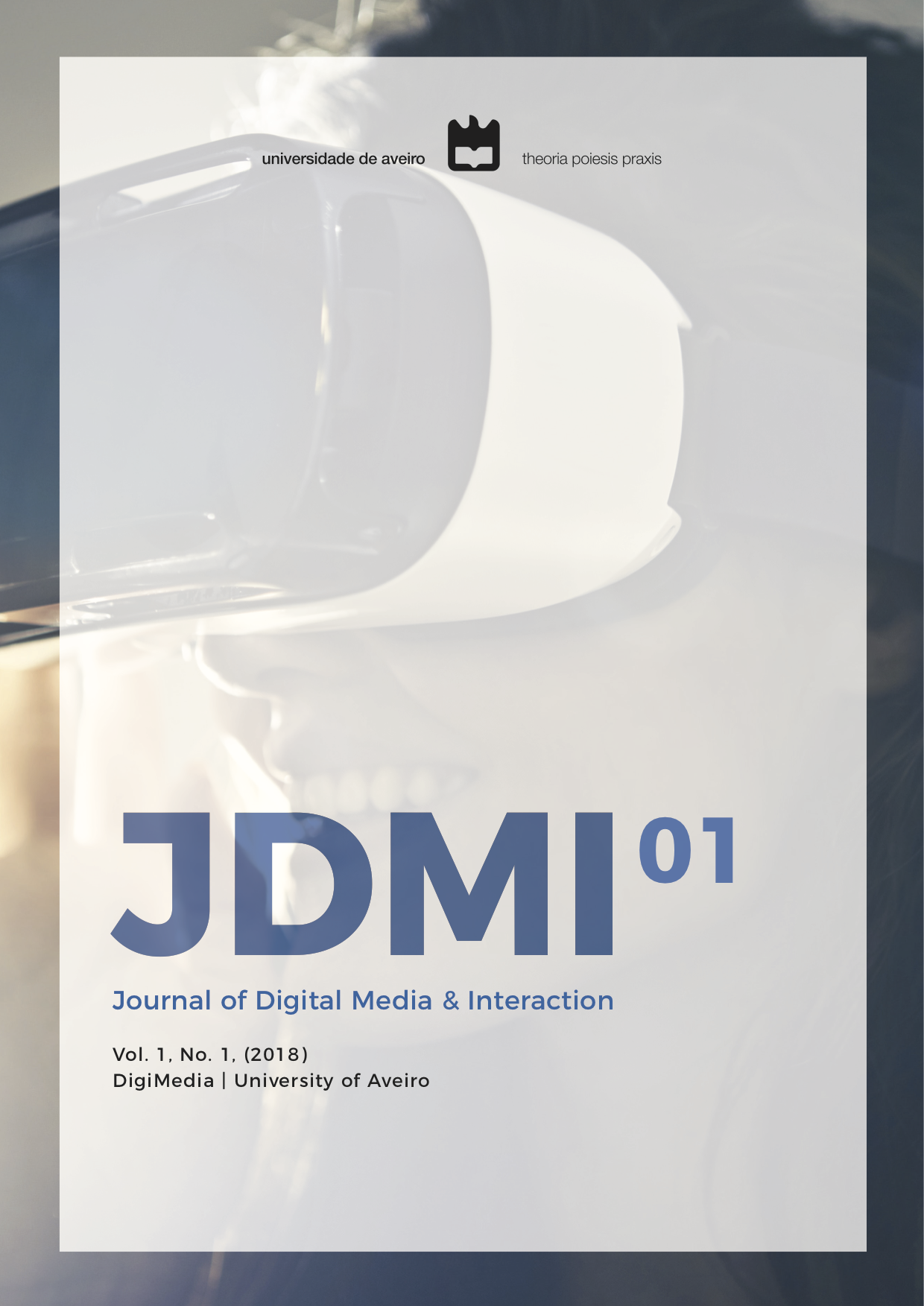Altmetrics and journalism: using Twitter comments to analyze public engagement
Abstract
This article presents the potential of the extraction and visualization data in Social Networks for the field of Journalism. The role of people's participation in networks emphasizes and praises facts that have been published in the media. We used Social Network Analysis (SNA) as a methodology to identify alternative metrics or "altmetrics" in a case study involving news about the death of the Rector of the Federal University of Santa Catarina (UFSC - Brazil), Luiz Carlos Cancelier. We applied the cloud based tool Netlytic to retrieve a volume of comments made on Twitter after the Rector's death, from 2017-11-28 to 2018-01-02. The analysis has two variables, the first one in the Social Network environment and the second focused on the people participating on it. Results indicated an interesting connection between SNA and the journalistic area, as an instrument to verify the impact of news and the engagement of the public commenting or sharing it.
Downloads
References
Alyami, E., & Toze, S. (2014). “Where to go on the weekend?” Trends for local information seeking in leisure settings using social media. Information Society (i-Society), 169–172.
Bandyopadhyay, S., Rao, A. R., & Sinha, B. K. (2011). Models for social networks with statistical applications(Vol. 13). Thousand Oaks: Sage.
Barros, M. (2015). Altmetrics: métricas alternativas de impacto científico com base em redes sociais. Perspectivas Em Ciência Da Informação, 20(2), 19–27. Retrieved from http://www.scielo.br/pdf/pci/v20n2/1413-9936-pci-20-02-00019.pdf
Bruns, A., Burgess, J. E., Crawford, K., & Shaw, F. (2012). # qldfloods and@ QPSMedia: crisis communication on Twitter in the 2011 south east Queensland floods. Brisbane: ARC Centre of Excellence for Creative Industries and Innovation, Queensland University of Technology. Retrieved from https://eprints.qut.edu.au/48241/1/floodsreport.pdf
Denver, U. of. (2018). Citation Analysis & Bibliometrics: Altmetrics & Social Media. Retrieved from http://libguides.du.edu/citationanalysis?p=1348086
Easley, D., & Kleinberg, J. (2010). Networks, crowds, and markets: reasoning about a highly connected world. Cambridge: Cambridge University Press.
Gouveia, F. C. (2016). A altmetria e a interface entre a ciência e a sociedade. Trabalho, Educação e Saúde, 14(3), 643–651.
Gruzd, A., Paulin, D., & Haythornthwaite, C. (2016). Analyzing Social Media And Learning Through Content And Social Network Analysis: A Faceted Methodological Approach. Journal of Learning Analytics, 3(3), 46–71.
Holmberg, K. J. (2015). Altmetrics for information professionals: Past, present and future. Waltham: Chandos Publishing.
Hu, M., Liu, S., Wei, F., Wu, Y., Stasko, J., & Ma, K.-L. (2012). Breaking news on twitter. In Proceedings of the SIGCHI Conference on Human Factors in Computing Systems(pp. 2751–2754). ACM.
Malini, F. (2016). Um método perspectivista de análise de redes sociais: cartografando topologias e temporalidades em rede. In XXV Encontro Anual da Compós, Universidade Federal de Goiás, Goiânia(Vol.7, pp. 1–30). Goiânia: Compós. Retrieved from http://www.labic.net/wp-content/uploads/2016/06/compos_Malini_2016.pdf
Martino, L. M. S. (2014). Teoria das Mídias Digitais: linguagens, ambientes e redes. Petrópolis: Vozes.
Munro, K., Hartt, C. M., & Pohlkamp, G. (2015). Social Media Discourse and Genetically Modified Organisms. The Journal of Social Media in Society, 4(1), 38–65.
Paulino, R. (2013). Conteúdo digital interativo para tablets-iPad: uma forma híbrida de conteúdodigital. Revista de Estudos Da Comunicação, 14(33), 91–106.
Paulino, R. de C. R. (2011). Uma abordagem para apoio à gestão de Comunidades Virtuais de Prática baseada na prospecção de participantes ativos. Universidade Federal de Santa Catarina. Retrieved from https://repositorio.ufsc.br/handle/123456789/95607
Recuero, R. (2017). Introdução à análise de redes sociais online. Salvador: EDUFBA.
Recuero, R., Bastos, M., & Zago, G. (2015). Análise de redes para mídia social. Porto Alegre: Sulina.
Rheingold, H. (1993). The virtual community: homesteading on the electronic frontier. Cambridge: MIT Press.
Roemer, R. C., & Borchardt, R. (2015). Meaningful metrics: a 21st-century librarian’s guide to bibliometrics, altmetrics, and research impact. Chicago: American Library Association.
Wasserman, S., & Faust, K. (n.d.). Social Network Analysis: Methods and Application(15th ed.). Cambridge: Cambridge University Press.
Wenger, E. (2010). Communities of practice and social learning systems: the career of a concept. In Social learning systems and communities of practice(pp. 179–198). London: Springer.
Wenger, E., McDermott, R. A., & Snyder, W. (2002). Cultivating communities of practice: A guide to managing knowledge. Cambridge: Harvard Business Press.
Copyright (c) 2018 Marina Lisboa Empinotti, Rita de Cássia Romeiro Paulino

This work is licensed under a Creative Commons Attribution-NonCommercial-NoDerivatives 4.0 International License.
Authors who publish in the JDMI agree to the following terms:
-
Authors retain copyright and grant the journal the right of first publication with the work simultaneously licensed under a Creative Commons BY-NC-ND 4.0. This licensing allows others to share the work with no changes and acknowledgement of the work's authorship and initial publication in this journal, but not for commercial use.
-
Authors are able to enter into separate, additional contractual arrangements for the non-exclusive distribution of the journal's published version of the work (e.g., post it to an institutional repository or publish it in a book), with an acknowledgement of its initial publication in this journal.
-
Authors are permitted and encouraged to post their work online (e.g., in institutional repositories or on their website) after publication, as it can lead to productive exchanges, as well as earlier and greater citation of published work.
Copyrights to illustrations published in the journal remain with their current copyright holders.
It is the author's responsibility to obtain permission to quote from copyright sources.
Any fees required to obtain illustrations or to secure copyright permissions are the responsibility of authors.
Additional Information
All correspondence concerning contributions, books and other review material should be sent to: deca-jdmi@ua.pt


